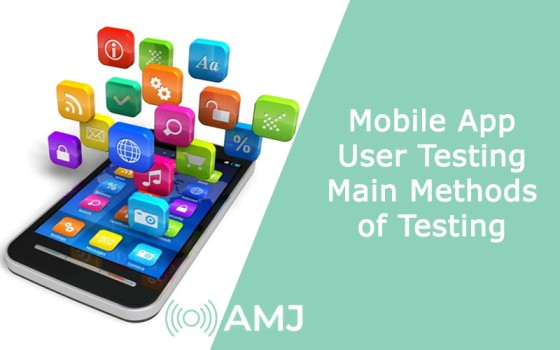Developing mobile apps is a challenging task. There are many avenues to consider even before you start developing the app. However, to ensure your app is successful, testing is a must.
Among the various tests you can run, user testing is crucial. This guide will provide essential information on mobile app user testing, including its importance, methods, and best practices.
Contents
Introduction to Mobile App User Testing
Mobile app user testing involves observing real users interacting with your app to identify usability issues, gather feedback, and make informed design decisions. By observing users in action, you can uncover areas of improvement and validate the effectiveness of your app’s features.
Importance of Mobile App User Testing
Consider these points to highlight the significance of mobile app user testing:
Enhancing User Satisfaction
- End user experience monitoring enables developers to identify usability issues and design flaws that may hinder user satisfaction.
- Developers can collect user feedback through comprehensive testing, leading to actionable improvements that align with user expectations.
- Developers can create a seamless and intuitive user experience by addressing usability concerns early in the SDLC.
Improving App Performance
- Rigorous user testing helps identify performance bottlenecks like slow loading times, crashes, or inefficient functionality.
- Developers can optimize app performance through testing, resulting in smoother and more reliable user interactions.
- Mobile apps can meet user demands and maintain a competitive edge by ensuring high performance.
Identifying and Resolving Issues
- User testing allows for identifying potential bugs, glitches, or compatibility problems across different devices and OS. Organizations can also leverage software testing automation to help with this.
- By detecting issues early on, developers can prevent negative user experiences and improve overall app stability.
- Thorough testing minimizes the risk of app crashes, data loss, or security vulnerabilities, fostering user trust.
Enhancing App Usability
- User testing helps understand a user’s behavior and preferences. This aspect enables developers to refine app interfaces and workflows.
- Developers can optimize navigation, reduce friction, and create intuitive interfaces that facilitate user engagement by analyzing user interactions.
- Usability improvements from user testing can increase user adoption and long-term app success.
Methods of Mobile App User Testing
You can employ various methods for mobile app user testing, including:
Exploratory Testing: This method involves exploring the mobile app’s functionalities and features in an unstructured manner. Testers interact with the app as end users would, exploring various scenarios and workflows to uncover usability issues or defects.
Usability Testing: Usability testing evaluates the app’s UI design and UX. Testers perform tasks and provide feedback on the app’s ease of use, intuitiveness, and efficiency. This aspect helps identify areas for improvement to enhance user satisfaction.
Functional Testing: This method verifies that the app’s functionalities work as intended. Testers execute specific actions and validate expected outcomes, ensuring the app functions correctly across different devices, operating systems, and network conditions.
Performance Testing: Performance testing assesses the app’s stability under varying loads and conditions. Testers measure response time, memory consumption, and network latency to ensure the app performs optimally and delivers a smooth user experience.
Compatibility Testing: This testing checks the app’s compatibility with multiple devices and other aspects. Testers verify that the app functions consistently across various screen sizes, resolutions, and hardware configurations, avoiding device-specific issues.
Security Testing: Security testing focuses on identifying vulnerabilities and ensuring the app’s protection against unauthorized access, data breaches, and other security risks. Testers analyze the app’s architecture, authentication mechanisms, and data handling processes to uncover potential security weaknesses.
Best Practices for Mobile App User Testing
To ensure effective user testing, consider the following best practices:
Effective mobile app user testing ensures optimal performance and user satisfaction. Follow these best practices to maximize the effectiveness of your testing process.
- Clearly define your objectives: Before beginning the user testing process, clearly outline your goals and objectives to focus your efforts and obtain meaningful insights.
- Identify your target audience: Determine the demographic or user segment you want to test your mobile app; this will ensure you gather relevant feedback and insights from your intended user base.
- Create realistic test scenarios: Design test scenarios resembling real-life situations and tasks that users will likely encounter when interacting with your mobile app. The valuable insights you get into the app’s usability and performance will help you immensely.
- Develop a structured test plan: Create a detailed test plan that outlines the specific tasks, procedures, and metrics you will use during the testing process. A well-structured plan ensures consistency and helps you gather consistent and comparable data.
- Use various testing methods: Employ a combination of testing methods, to gain comprehensive insights into different aspects of your mobile app. Each method offers unique perspectives and helps identify potential issues from multiple angles.
Conclusion
User testing is vital in mobile app development, helping you create user-friendly, high-performing apps that meet target user needs. By implementing user testing methods and best practices, you can enhance your app’s usability, gather valuable feedback, and improve the overall user experience.
Additionally, organizations can also leverage digital experience monitoring tools. HeadSpin for example helps users improve their digital experience monitoring. It gives them access to real devices and a powerful AI that helps identify exact issues with UX. Reach out!












![Index of Money Heist [Season 1, 2, 3 & 4 – All Episodes, Cast and Plot] Index of Money Heist](https://www.asiamediajournal.com/wp-content/uploads/2021/05/Index-of-Money-Heist-3-100x70.jpg)